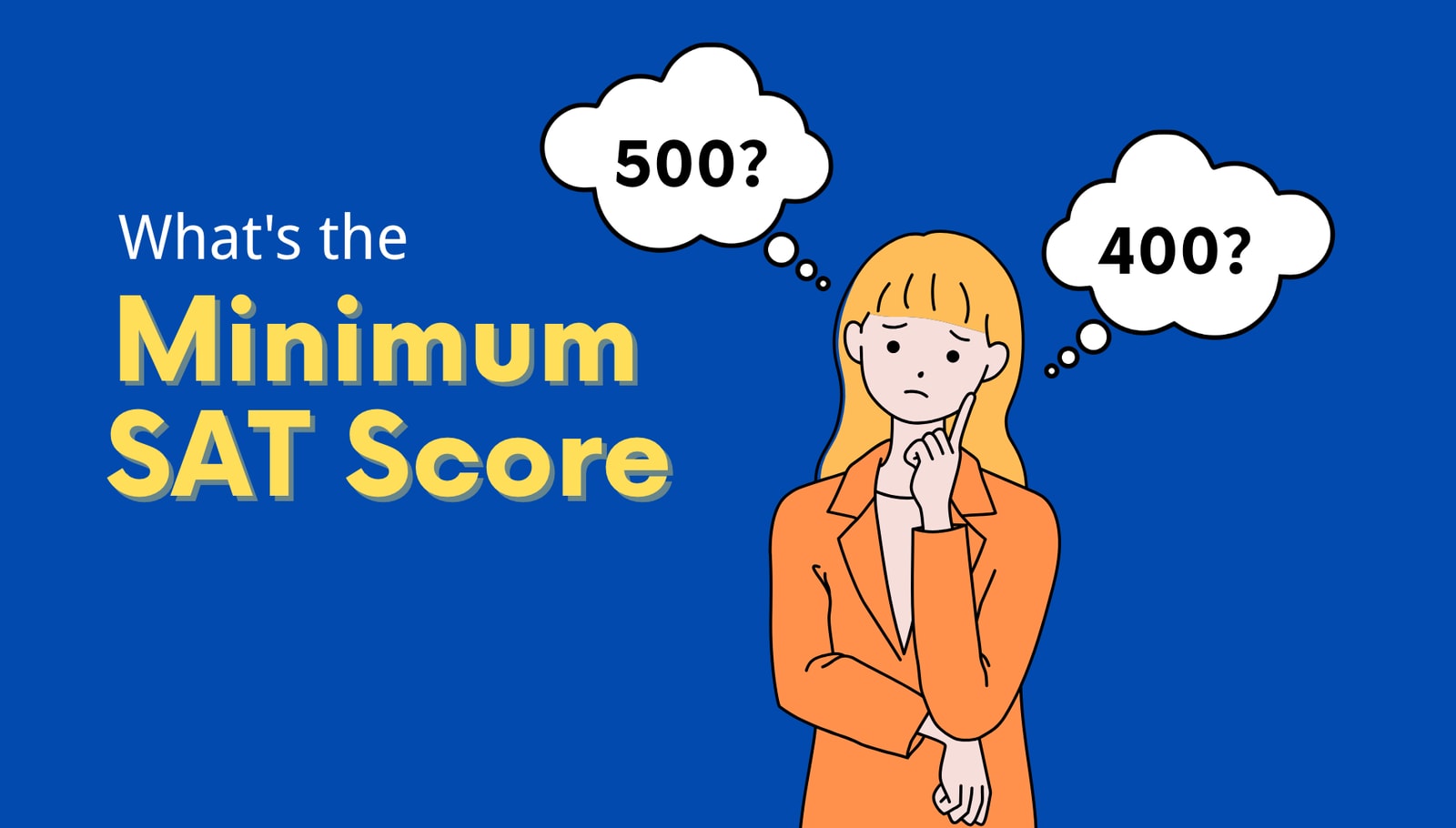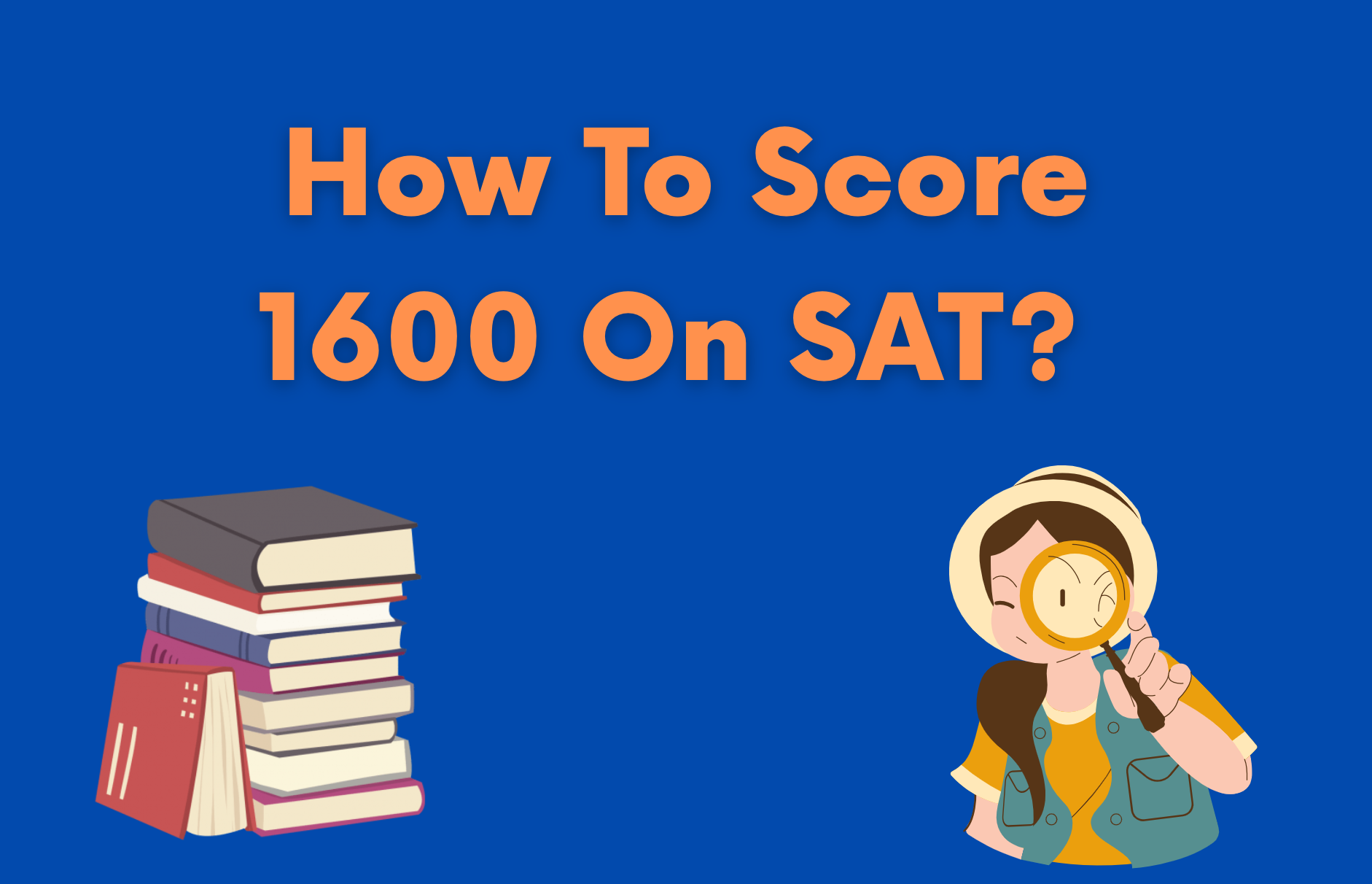What's the Minimum SAT Score for College?
Author
Phoenix Wilder
Date Published

Preparing for college applications can be an intense and overwhelming experience for many students. As part of this journey, one of the most common concerns revolves around the SAT: what is the minimum SAT score required to get into college? This article delves into the lowest possible SAT score, discusses how much significance SAT scores hold in admissions, and offers strategies to help students achieve goals despite any initial setbacks.
Understanding the Minimum SAT Score
The SAT is a standardized test with a score range of 400-1600, divided equally between two sections: Math and Reading & Writing (commonly abbreviated as RW). Each section has a scoring scale of 200-800, making 400 the absolute lowest score possible. This score would result if a student answered no questions correctly, skipped every question, or left the test entirely blank. Thankfully, this is exceedingly rare!
To provide context, average SAT scores typically sit around 1050, so even a below-average score is significantly higher than the minimum. Remember: scoring the lowest possible score is only realistic through complete disengagement, like leaving an entire section unanswered.
What If You Guess Randomly?
Odds are, even if you randomly guessed answers on every question, your score would likely be higher than 400. Here’s why:
1. SAT Question Design: The SAT is composed largely of multiple-choice questions with four answer options each. With random guessing, you have a 25% chance of choosing the correct answer.
2. Estimated Correct Answers with Random Guessing:
- Reading & Writing: This section has 54 questions. By guessing, you can expect to answer about 13-14 questions correctly (25% of 54).
- Math: There are 44 questions, about 33 of which are multiple-choice while the rest (11) are grid-in/free-response questions. If you guessed randomly on multiple-choice questions, you’d likely answer 8-9 correctly, assuming no correct responses for the grid-in portion.
3. Adaptive Testing Format: On the new digital SAT, the test adapts to your performance. Difficulty levels adjust after the first module of each section, which means the overall score also considers the complexity of the questions you answer correctly. As a result, there's some variability in how scores are calculated, even when guessing.
These factors make it unlikely to receive a 400 while engaging with the test, even randomly. For example, in mock tests conducted with pure guessing, scores ranged mostly between 460 and 640, significantly higher than the minimum.
But What is the Minimum SAT Score Needed for College Admission?
The answer, simply, is: it depends—largely on each college’s requirements and selectivity. Here’s a breakdown of various institutions, from highly selective schools to less competitive ones, and their general SAT expectations:
1. Highly Selective Schools:
Top-tier institutions like Harvard, MIT, and Stanford require scores well beyond 1450. Even if you meet this threshold, admissions often hinge on other factors, such as extracurricular activities and academic achievements.
2. Selective Public Universities:
Schools like the University of Michigan or UC Berkeley generally expect applicants to score around 1350 or higher.
3. Moderately Selective Colleges:
Many state universities and liberal arts colleges often have middle 50% SAT ranges of 950-1200. These are realistic targets for many students.
4. Open-Admission or Specialty Schools:
Institutions such as community colleges, art schools, or technical programs may not have rigid SAT requirements, and test scores are often not the focal point for admissions. Creativity, portfolios, or other qualifications may weigh more heavily.
For a more specific prediction, you can refer to the “middle 50% SAT range” provided by most colleges. This range reflects the scores of the middle 50% of students admitted to the school. Students above the 75th percentile are considered strong candidates, while those below the 25th percentile may still get admitted if other application components are impressive.
How to Select Colleges Based on SAT Scores
When choosing colleges, it's important to categorize them into safety, match, and reach schools:
- Safety Schools: These are institutions where your SAT score is significantly higher (by 50+ points) than the school's average admitted range (mid-50%). You’re very likely to gain acceptance.
- Match Schools: Your score fits comfortably within the middle 50% of scores for admitted students. If other parts of your application are average or above-average, you stand a strong chance.
- Reach Schools: These schools' mid-50% range is above your SAT score, but admission remains possible provided that other elements (such as grades, extracurriculars, or essays) stand out.
It’s wise to apply to a mix of these categories to keep your options open. For example, a student with a 1400 SAT might consider Boston College (middle 50%: 1450-1520) a reach, Stony Brook University (middle 50%: 1330-1470) a match, and SUNY Albany (middle 50%: 1140-1310) a safety school.
Setting an SAT Target Score
Setting a goal score can help focus your preparation. A good rule of thumb is to aim for the 75th percentile of the most competitive school in your list. For example, if the colleges you're applying to have the following SAT ranges

Your target score should be 1510, which is the 75th percentile for UIUC—the most competitive school on the list. Achieving this would boost your chances across all your chosen institutions.
Use the table below to set personal SAT targets for your dream colleges:

What to Do If Your Score Feels Too Low?
Discovering that your SAT scores are far below what you hoped for can be disheartening, especially if it seems like your dream schools are now entirely out of reach. However, there’s no need to despair—there are multiple strategies you can implement to address this situation and continue on the path to higher education. Below, we explore seven practical solutions to help you move forward with confidence.
1. Prep for the SAT and Retake It
One of the simplest and most effective options is to retake the SAT after better preparation. Sometimes, students underperform because they lacked sufficient or targeted preparation. If your college deadlines are still several months away, allocating time to study and retaking the test is a great way to boost your score.
Preparation Tips:
- Invest in personalized SAT prep programs—whether digital like Khan Academy (which is free), in-person classes, or innovative platforms like Best SAT Score, which provides an AI-driven, tailored study experience.
- Use high-quality SAT prep books and work through practice tests routinely.
- Identify weak areas (e.g., algebra or reading comprehension) and focus your study efforts on improving them.
Why this works: Many students see score improvements after focused and strategic SAT preparation, sometimes by as much as 100-200 points. Tools like Best SAT Score can help optimize your study approach, ensuring efficiency and measurable progress.
2. Consider the ACT Instead
For some students, switching from the SAT to the ACT can make a noticeable difference. While the SAT and ACT are now more similar than they used to be, subtle differences in structure and format might work in your favor on the ACT.
- The ACT has a Science section, which may benefit students who are scientifically literate or quick at interpreting charts and graphs.
- Math on the ACT includes broader topics like trigonometry, but the questions are often more straightforward than on the SAT.
Take a full-length ACT practice test before making the switch. If your performance on ACT practice exams is stronger than your SAT practice scores, you might have found a better fit.
3. Evaluate Whether You Need Testing Accommodations
Standardized tests like the SAT can pose additional challenges for students with learning disabilities, medical conditions, or psychiatric disorders. If you believe these factors impacted your performance, you may qualify for special testing accommodations such as:
- Extended time on the test
- Small group testing environments
- Use of assistive technology or extra breaks
This process requires proper documentation, such as an Individualized Education Plan (IEP) or a 504 Plan from your school. The accommodation request should be submitted as early as possible to allow sufficient time for approval.
4. Adjust Your College Expectations
It may be time to revisit your college list and consider less selective colleges. Keep in mind that there are hundreds of excellent institutions that admit students with moderate SAT scores and still provide exceptional academic opportunities. For example, while a university like Johns Hopkins calls for high SAT scores well above 1400, colleges like Boston University or Syracuse University may be more attainable with a solid 1200-1300.
Here’s why this is worth exploring:
- You could discover incredible programs and campuses that weren’t on your radar before.
- Many colleges offer honors programs for students on the upper end of their admitted range, giving you access to unique academic experiences even with a lower overall ranking.
Every college has unique strengths and opportunities you can benefit from—don’t let selectivity be your only metric for judging schools.
5. Apply to Schools That Accept Alternate Test Scores
A great strategy for students who have strong AP or IB scores is applying to colleges that accept these in place of SAT or ACT scores. Some schools have flexible admissions policies and are willing to consider other standardized assessments.
For instance:
- University of South Dakota accepts Smarter Balanced Assessment scores as an alternative.
- Hamilton College allows applicants to submit self-reported AP and IB test scores rather than SAT/ACT results.
- NYU accepts a combination of AP, IB, or other tests in lieu of SAT/ACT scores.
If you’ve already demonstrated academic achievement on AP exams, this may be an ideal option for showcasing your skills in relevant areas.
6. Apply to Test-Optional Colleges
The increase in test-optional admissions policies over recent years has made college more accessible. At test-optional schools, submit only the materials that highlight your strengths—such as your GPA, personal essays, extracurricular activities, and recommendation letters—while leaving out standardized test scores if they don’t reflect your ability.
Highly regarded test-optional schools include:
- Wake Forest University
- Bowdoin College
- American University
- Wesleyan University
- Sarah Lawrence College
- Smith College
Make sure you research whether test-optional policies apply specifically to your intended major. Some competitive programs, especially in the sciences, may still require test scores.
7. Consider Starting at a Community College
If none of the above solutions seem viable or your SAT score is exceptionally low, don't lose hope. Attending a community college is an excellent way to start your post-secondary journey. Community colleges typically have open admissions policies, meaning anyone with a high school diploma or GED is eligible to enroll.
Benefits of this pathway:
- Transfer Path: After completing an associate degree or two years of coursework, you can transfer to a four-year university. Many prestigious schools welcome such transfer students, especially if they’ve performed well academically at the community college level.
- Cost-Effective Option: Community colleges are often significantly more affordable than four-year universities, potentially saving you thousands of dollars.
- Fresh Start: Your academic performance in community college carries more weight than your high school SAT score when transferring, allowing you to reset your academic trajectory.
Conclusion
In conclusion, while the lowest possible SAT score is 400, very few students ever receive this. A low SAT score doesn't necessarily prevent you from attending college, as many institutions value other parts of your application and even offer test-optional policies. By understanding your target schools’ score ranges and preparing effectively, you can overcome SAT challenges and successfully navigate the college admissions process!
Related Posts

Achieving a perfect 1600 SAT score isn’t impossible! Discover expert tips, strategies, and tools to crush the SAT and reach your dream score!

Learn how the Digital SAT works! From sections to scoring, get the insights you need to prepare effectively and boost your college admissions game.